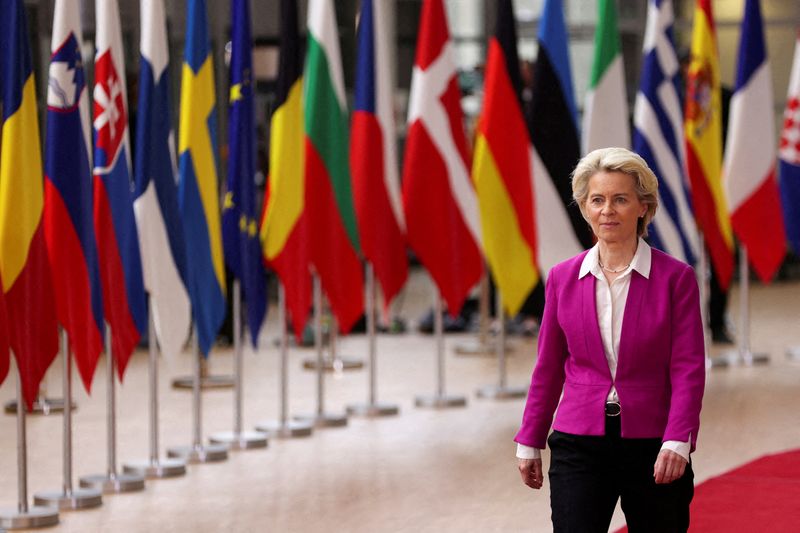How Russia was driven to default By Reuters

© Reuters. FILE PHOTO: European Commission President Ursula von der Leyen arrives for the European Union leaders summit, as EU’s leaders attempt to agree on Russian oil sanctions in response to Russia’s invasion of Ukraine, in Brussels, Belgium May 30, 2022. REUTERS
By Marc Jones
LONDON (Reuters) – Russia’s first major international debt default in over a century, which Washington said became a fact on Monday, follows months of co-ordinated Western sanctions that left Moscow with cash but o access to the international financial network.
Below is a summary of the key moments that have led up to this point.
THE “BIG PACKAGE”
At around 11.30 p.m. (2230 GMT) on Feb. 25, the day after Russian troops entered Ukraine, European Union’s experts in Brussels said a set of sanctions they had worked on for days, or the “Big Package” as they called it, was ready.
Just before midnight, the European Commission announced https://www.consilium.europa.eu/en/press/press-releases/2022/02/25/russia-s-military-aggression-against-ukraine-eu-imposes-sanctions-against-president-putin-and-foreign-minister-lavrov-and-adopts-wide-ranging-individual-and-economic-sanctions the measures.
While emergency Group of Seven and EU meetings earlier made clear a response was coming, the package named Vladimir Putin and his to diplomat Sergey Lavrov personally, and, as it later became clear, froze some $300 billion of the Russian central bank’s reserves.
“That was really the moment when we said, okay, well we’ve done it,” one European source told Reuters. “That was, I think, a very pivotal moment for a lot of people around a table.”
EU’s Von der Leyen lays out Russia sanctions https://fingfx.thomsonreuters.com/gfx/mkt/dwvkrmloapm/Pasted%20image%201656346091349.png
SWIFT ACTION
Days later, on March 2, the EU struck again https://www.consilium.europa.eu/en/press/press-releases/2022/03/02/russia-s-military-aggression-against-ukraine-eu-bans-certain-russian-banks-from-swift-system-and-introduces-further-restrictions by banning seven Russian banks from SWIFT, an international financial messaging system crucial for cross-border transactions.
Booting Russian lenders from SWIFT had long been considered a ‘nuclear option,’ but the invasion put it on the table and when the EU decided to activate it, those at SWIFT headquarters just outside Brussels were ready.
The only question was how long they had to implement the move, “five days or five minutes?” another source said. In the end is was 10-12 days.
FIRST CUTS, BUT NOT THE DEEPEST
Credit rating agency, S&P Global (NYSE:), already stripped Moscow of its coveted investment grade rating on Feb. 26 and Russian bonds were slumping, but a heavier blow followed on March 15, when the EU told top credit agencies to stop rating Russian dept or risk losing their licenses to operate in the bloc.
“We were caught flat-footed, certainly we were not given any advanced warning,” one senior rating agency analyst said. “Basically the question was,…
Read More: How Russia was driven to default By Reuters
